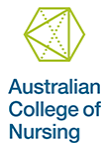Parkinson's Care

This postgraduate unit of study is designed for health professionals who care for people diagnosed with both typical and atypical Parkinson’s Disease and provides students with the opportunity to extend their knowledge of this specialty area. The unit content explores the epidemiology, anatomy, physiology, motor and non-motor clinical features of Parkinson’s Disease. Students will examine contemporary assessment and management techniques, while critiquing therapeutic approaches to care at all stages, with reference to best practice guidelines. Students will examine pertinent psychosocial issues relating to the care of a person diagnosed with Parkinson’s Disease and their carers. Multidisciplinary consultation and referral pathways, legal and ethical issues and advances in care, will also be considered.
Term : JANUARY, JULY
Hours of Study: 150
Credit Points : 6
*The single unit of study would not be offered as part of the Graduate Certificate in Community and Primary Health Care Nursing from January 2023 onwards
Theme 1: The physiology and pathophysiology of Parkinson's disease
Explore the therapeutic approaches to care for people diagnosed with Parkinson’s, and their support network.
Theme 2: Introduction to Parkinson's Specific Assessment
Analyse evidence-based –practice impacting the care outcomes for people diagnosed with Parkinson’s.
Theme 3: Clinical Management and Therapeutic Approaches to Care
Evaluate health outcomes to plan health promotion strategies for people diagnosed with Parkinson’s.
Theme 4: The multidisciplinary approach to Parkinson's care
Define the role of the multidisciplinary team in the provision of holistic care for people diagnosed with Parkinson’s.
Theme 5: Ethico-legal considerations
Examine the ethico-legal issues of care for people diagnosed with Parkinson’s and their support network.
- Anaesthesia Fundamentals | Anatomy | Anatomical Di...
- Posted By eIntegrity Healthcare e-Learning
- Posted Date: 2024-11-25
- Location:Online
- This session provides an outline of the important differences between the adult and the paediatric airways. The overall objective is to give the trainee the understanding of the development of the anatomy of the airway from birth to adulthood, which is ne
- Anaesthesia Fundamentals | Anatomy | Mediastinum a...
- Posted By eIntegrity Healthcare e-Learning
- Posted Date: 2024-11-24
- Location:Online
- This session describes the contents, relations and anatomical divisions of the mediastinum.
- Anaesthesia Fundamentals | Anatomy | Microstructur...
- Posted By eIntegrity Healthcare e-Learning
- Posted Date: 2024-11-24
- Location:Online
- This session will cover the structure of the lungs and pleura at a cellular level. In particular there will be an emphasis on the structure and function relationships which allow gas exchange to occur.
- Anaesthesia Fundamentals | Anatomy | Trachea, Main...
- Posted By eIntegrity Healthcare e-Learning
- Posted Date: 2024-11-24
- Location:Online
- This session describes the structure, relations, blood and nerve supply of the trachea, carina, main bronchi and major bronchopulmonary segments.
- Anaesthesia Fundamentals | Anatomy | Anatomy of th...
- Posted By eIntegrity Healthcare e-Learning
- Posted Date: 2024-11-24
- Location:Online
- This session describes the anatomy of the oral cavity, pharynx and larynx. The nerve supply to the larynx and the implications of damage to these nerves is also described.


